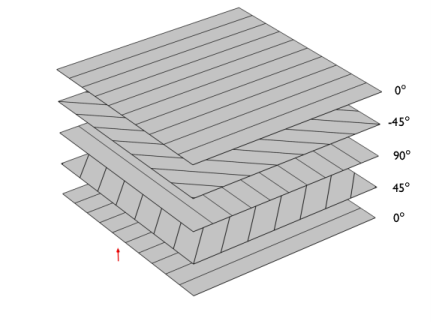The stacking sequence, shown in Figure 3-1, is defined by the fiber orientation of each ply with respect to the first axis of the laminate coordinate system. The stacking sequence is interpreted from bottom to top, and the orientation angles are in general specified in degrees.
